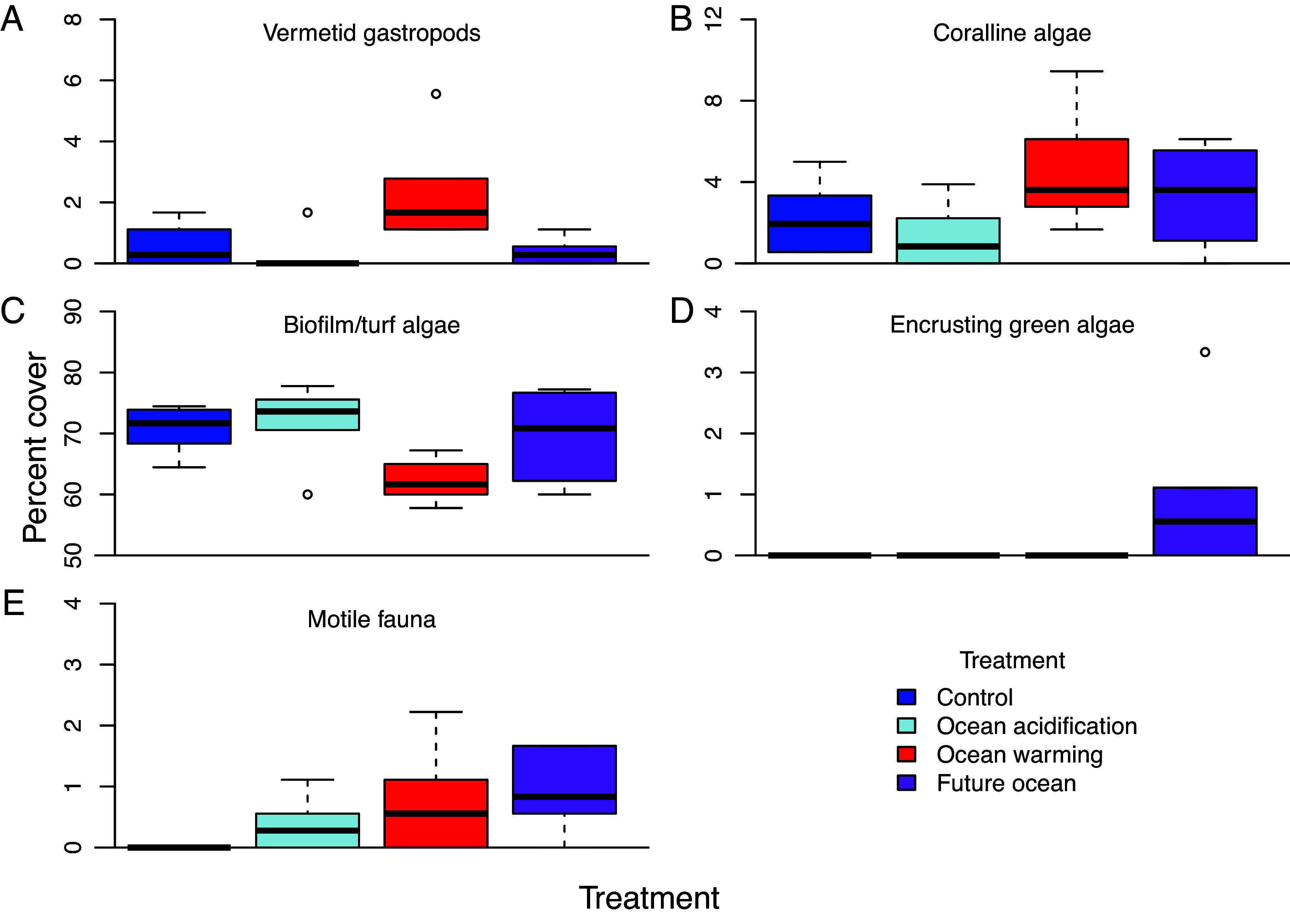Fig. 4.

Benthic cover of functional groups on settlement tiles colonized in the mesocosms at the end of the study. (A), vermetid gastropods (B), crustose coralline algae (CCA), (C), biofilm/turf algae, (D), encrusting green algae, (E), motile fauna (n = 6 ARMS tile arrays per treatment). Vermetid gastropods, CCA, biofilm/turf algae, and motile fauna showed significant responses to warming, whereas only vermetid gastropods responded negatively to acidification. Encrusting green algae attained significantly higher abundance under the combined future ocean scenario as compared to the other treatments. None of the other functional groups (anemones, bivalves, macroalgae, sediment, serpulid worms, sponges, tunicates, and uncolonized space) responded significantly to treatment conditions. Box-plots show the median as center line, box limits are upper and lower quartiles, whiskers are 1.5× interquartile range, and open circles as outliers. Boxes are not visible where values were below detection limits of 0.09%. SI Appendix, Tables S2 and S4 for test results.
